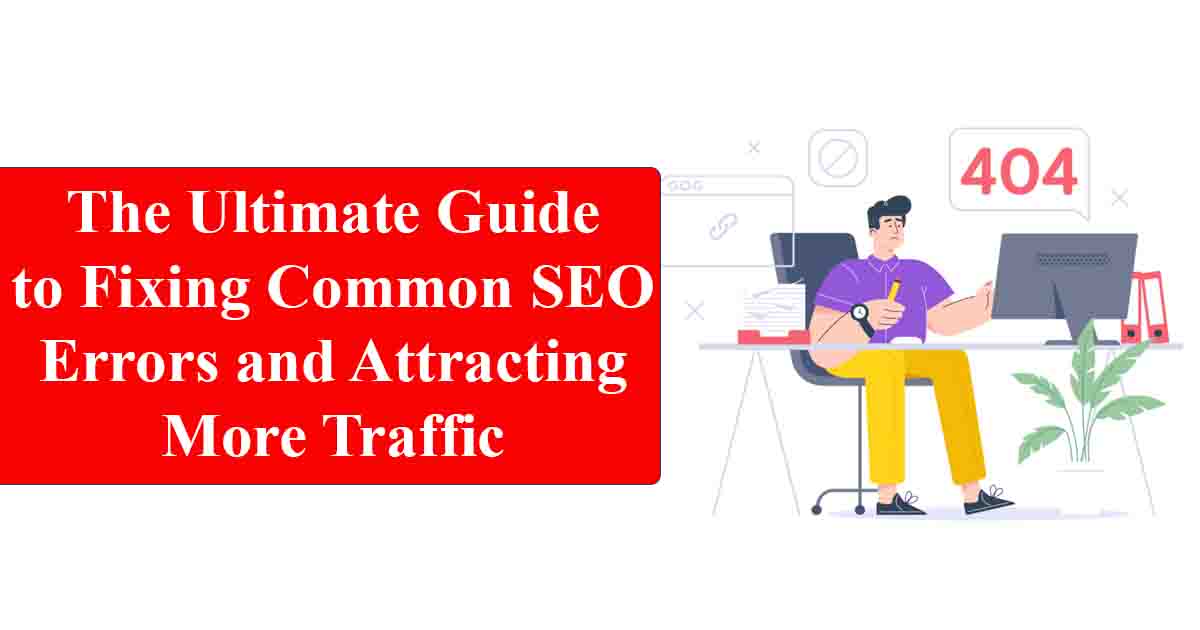Search Engine Optimization (SEO) is a crucial component of online success for businesses and websites. It involves optimizing a website’s content, structure, and performance to rank higher in search engine results pages (SERPs) and attract more traffic.
While SEO can be a complex and ever-changing field, there are certain mistakes that are common and can hinder a website’s ranking potential.
In this guide, we will discuss the seven biggest SEO errors that website owners and digital marketers make, and provide actionable solutions to fix them. These errors range from technical issues, such as slow page speed, to content-related problems, such as keyword stuffing.
We will also cover how to improve website usability, build high-quality backlinks, and use data analytics to track performance and make informed decisions.
By following the tips and solutions in this guide, you can boost your website’s SEO rankings and attract more organic traffic.
Whether you are just starting out in the world of SEO or are an experienced digital marketer looking to improve your skills, this guide will provide valuable insights and strategies to help you succeed in the ever-changing landscape of SEO.
Avoiding the 7 Biggest SEO Mistakes
Ignoring Technical SEO:
Technical SEO refers to the optimization of a website’s technical components that impact its ability to rank on search engines. This includes optimizing page speed, using correct tags and metadata, fixing broken links, implementing schema markup, and ensuring website security.
Ignoring technical SEO can hurt a website’s ranking potential and make it difficult for search engines to crawl and index the site’s pages.
Keyword Stuffing:
Keyword stuffing is the practice of using a large number of keywords in a piece of content in an attempt to manipulate search engine rankings.
This practice is outdated and can result in a penalty from search engines. Instead, content should focus on providing value to the user while including relevant keywords in a natural manner.
Duplicate Content:
Duplicate content is content that appears on multiple pages or websites. This can confuse search engines and result in a penalty.
To avoid this, ensure that each page on a website has unique content and implement canonical tags to indicate the original source of the content.
Poor User Experience:
A poor user experience can negatively impact a website’s SEO. This includes slow page speed, broken links, confusing navigation, and unresponsive design.
A website should be optimized for usability to provide a positive user experience and improve its ranking potential.
Low-Quality Backlinks:
Backlinks are links from other websites that point to a website. Low-quality backlinks, such as those from spammy websites, can hurt a website’s ranking potential.
To improve SEO, focus on building high-quality backlinks from reputable sources.
Ignoring Mobile Optimization:
More than half of all website traffic comes from mobile devices. Ignoring mobile optimization can result in a poor user experience and hurt a website’s ranking potential.
A website should be optimized for mobile devices to provide a positive user experience and improve its ranking potential.
Not Tracking Performance:
SEO is an ongoing process, and it’s important to track a website’s performance to make informed decisions about optimization efforts. This includes tracking keyword rankings, traffic sources, bounce rate, and conversion rate.
By monitoring performance, website owners and digital marketers can make informed decisions about optimization efforts and improve a website’s SEO over time.
Conclusion
In conclusion, avoiding the seven biggest SEO mistakes and implementing best practices can greatly improve a website’s ranking potential and attract more organic traffic. Technical SEO, keyword stuffing, duplicate content, poor user experience, low-quality backlinks, mobile optimization, and not tracking performance are all common mistakes that website owners and digital marketers make.
However, by following the tips and solutions provided in this guide, website owners and digital marketers can optimize their websites for search engines and improve their SEO rankings over time.
Remember, SEO is an ongoing process, and it’s important to monitor performance and make informed decisions about optimization efforts. By staying up-to-date with the latest SEO trends and best practices, website owners and digital marketers can continue to improve their website’s ranking potential and attract more organic traffic.
With the right strategies and a commitment to SEO, website owners, and digital marketers can achieve online success and stand out in today’s competitive digital landscape.
